Exploring Optix Plexiglass: Properties and Innovations
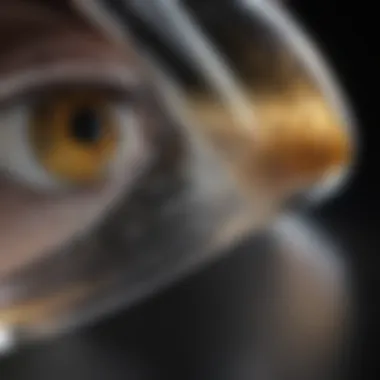

Overview of Topic
Optix Plexiglass is a fascinating material that is taking the home improvement industry by storm. Known for its clarity, strength, and versatility, this acrylic sheet serves as a substitute for glass in numerous applications. Its unique properties make it an appealing choice for homeowners looking to enhance their living spaces without sacrificing durability or functionality.
One of the standout features of Optix Plexiglass is its lightweight nature compared to traditional glass. This advantage allows for easier handling during installation and renovation projects. Also, this material boasts impressive resistance to impact, making it a safer option where breakage is a concern. Homeowners are increasingly prioritizing materials that not only look good but also withstand the test of time, which makes Optix Plexiglass a relevant choice today.
Its importance in home improvement extends beyond just aesthetics. In fact, the sustainable aspects of Optix Plexiglass cannot be overlooked. It is a recyclable material, aligning perfectly with eco-conscious values. As more homeowners seek environmentally-friendly options, Optix Plexiglass offers a practical solution that combines beauty and sustainability.
Common Challenges and Solutions
Homeowners might face several challenges when incorporating Optix Plexiglass into their spaces. A common issue is ensuring proper installation. Many novices might underestimate the specific requirements to cut and fit the material accurately. Without the right tools and techniques, the project might not yield the desired results.
To tackle this challenge, here are some practical tips:
- Use the right tools: Investing in a circular saw with a fine-tooth blade is essential for clean cuts. A utility knife can help make smaller adjustments.
- Get measurements right: Always double-check your measurements before making cuts. Remember, “Measure twice, cut once.”
- Consider climatic factors: Adjustments may need to be made based on temperature and humidity levels, as they can affect the material’s expansion and contraction.
Another obstacle may be cleaning and maintaining the Plexiglass. Over time, it can scratch and cloud, which detracts from its transparency. To keep it in prime condition, consider the following solutions:
- Gentle cleaning: Use a soft cloth with mild detergent. Avoid abrasive cleaners, sandpaper, or razor blades to prevent scratching.
- Protective coatings: Applying a UV protectant will help maintain clarity and reduce fading, especially in areas with a lot of sunlight.
Product Recommendations
When looking for the best options in the market, certain brands stand out due to their quality and performance in home improvement projects.
- Optix by Plaskolite: This line of Plexiglass is well-respected for its superior clarity and range of colors. They also offer UV-resistant options, making them perfect for outdoor applications.
- Palram’s Makrolon: Known for its robust durability, Makrolon is ideal for projects requiring extra strength, such as in patio or pool enclosures.
Benefits of These Products
- Optix by Plaskolite: Offers flexibility in design and a variety of thicknesses for different applications.
- Palram’s Makrolon: Provides excellent weather resistance and has a impact resistance that rivals glass.
Step-by-Step Guides
Implementing improvements with Optix Plexiglass can be simplified into actionable steps. Whether you're building a display case or replacing old windows, follow these steps:
- Planning: Determine the dimensions and design for your project. Sketch out a rough outline to envision the final result.
- Gathering Materials: Acquire all your needed tools and materials, including the Optix Plexiglass sheets, marking tools, a cutting tool, and a drill (if necessary).
- Cutting the Plexiglass: Use a circular saw or utility knife to achieve clean edges based on your outlined measurements. Always wear safety goggles while cutting.
- Installation: Position the Plexiglass correctly in your desired frames or settings. Secure it using screws or appropriate adhesive, ensuring it’s firmly in place.
- Finishing Touches: Inspect your work to ensure everything is aligned and clean. A final wipe with a gentle cleaning solution will enhance clarity.
By following these steps, you can transform your space with Optix Plexiglass in a way that's both aesthetically pleasing and functional.
Prolusion to Optix Plexiglass
The journey of discovering Optix Plexiglass kicks off with understanding its significance in various realms, notably in household applications. It’s a material that has garnered attention not just for its versatility, but also for its outstanding physical properties that elevate it above conventional glass and plastic options. This article aims to unpack these elements, unwrapping the layers of its benefits and considerations, especially for home improvement enthusiasts.
Definition of Optix Plexiglass
Optix Plexiglass is a brand of acrylic sheet made from polymethyl methacrylate, or PMMA for the chemically inclined. Unlike regular glass, it offers superior clarity and is nearly half the weight, making it an ideal alternative for a slew of practical applications. Household items, such as protective barriers, display cases, and even interior decorations often utilize Optix due to its durability and lightweight nature.
One distinguishing characteristic is its incredible transparency, allowing up to 92% of light to pass through. This quality makes it a top choice for crafting items that require both aesthetic appeal and functionality. To put it simply, it’s the clear option in many ways - quite literally.
Historical Context
Understanding where Optix Plexiglass fits within the timeline of materials innovation sheds light on its present-day valor. First synthesized in the 1920s, PMMA was introduced as a shatter-resistant alternative to glass. Through the decades, this synthetic polymer became widely adopted, particularly after World War II, as demand surged for practical, lightweight materials.
In the 1950s, advancements in manufacturing techniques further propelled Plexiglass into various industries, from automotive to architectural. Homes and buildings, too, began to feature this material, integrating it into windows, skylights, and decorative elements.
Fast forward to today, and Optix Plexiglass not only enjoys a legacy but is also a staple in modern design. Its blend of functionality and elegance continues to resonate well with homeowners looking to enhance both the utility and aesthetic of their spaces.
"Plexiglass offers a versatile solution, bridging the gap between traditional materials and contemporary design needs."
As we explore the enduring journey of Optix Plexiglass, its historical context pinpoints a vital point: it's not merely a product but rather a cultural artifact that reflects innovation and adaptation in material science.
Physical Properties of Optix Plexiglass
When it comes to materials that stand out in both functionality and aesthetics, Optix Plexiglass certainly does not go unnoticed. Its physical properties play a crucial role in explaining why this material is favored across various industries. From residential uses where visibility and safety intertwine to innovative architectural designs, understanding the specific elements, benefits, and considerations regarding the physical properties of Optix Plexiglass is essential.
Transparency and Clarity
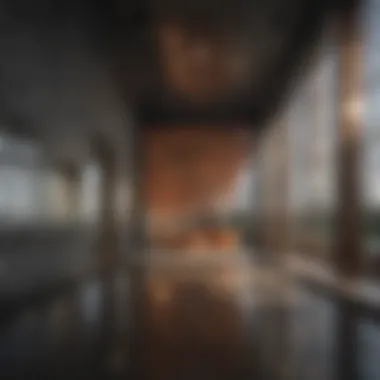
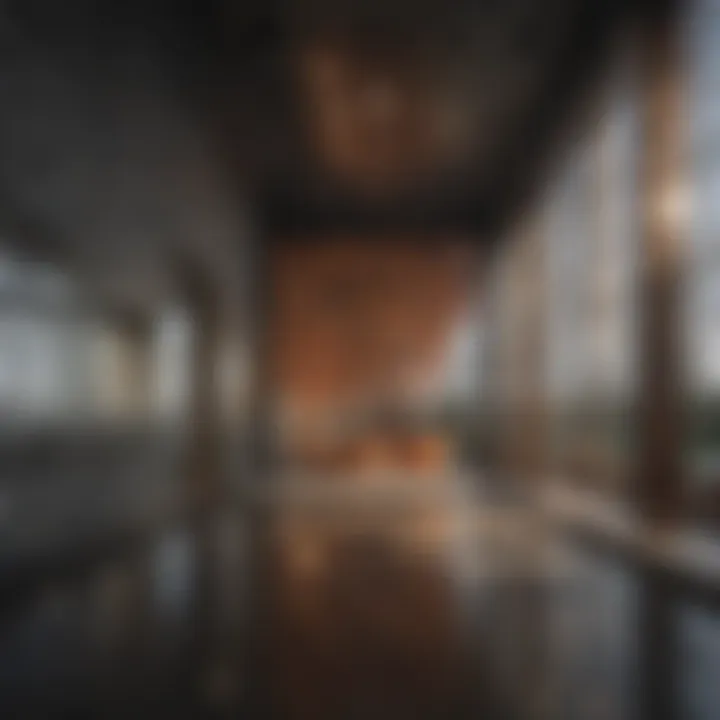
One of the standout traits of Optix Plexiglass is its remarkable transparency. With clarity levels approaching that of glass, it allows for maximum light transmission, making it ideal for applications like aquariums, windows, and even display cases. Imagine installing plexiglass instead of standard glass in your home; the difference is noticeable. Lesser reflection and higher light passage create an inviting space where natural light reigns.
Moreover, this transparency contributes positively to aesthetic appeal. Homeowners and designers often opt for Optix Plexiglass due to its ability to complement existing decor without overshadowing it. Odviously, there’s more than just beauty at play here:
- UV Resistance: Unlike regular glass, Optix Plexiglass exhibits good UV filtering characteristics. This means both indoor furniture and outdoor decorations made with plexiglass won’t fade easily under the sun.
- Ease of Fabrication: This material can be easily cut, shaped, or drilled, allowing for customized installations that match unique architectural needs without sacrificing visual quality.
Durability and Impact Resistance
When one considers materials for home or commercial use, durability often tops the list of priorities. Optix Plexiglass is known for its impressive impact resistance, making it about 10–20 times stronger than traditional glass. This quality makes it an obvious choice for environments that require heightened safety, such as schools or places of business.
In addition to resisting various impacts, Optix Plexiglass displays excellent weather-resistant capabilities. It is not easily affected by rain, heat, or snow, ensuring longevity even in unpredictable climates. Here are a few important points about its durability:
- Low Maintenance: With enough strength to avoid breakage under normal stress, there’s less hassle of frequent repairs or replacements.
- Scratch Resistance: This is not merely window dressing; many variants of Optix Plexiglass come with scratch-resistant coatings that keep your surfaces looking sharp over time.
"Invest wisely in materials—what you choose today can save you from future headaches."
Weight Characteristics
Lightweight but robust, Optix Plexiglass can be the perfect blend of qualities many homeowners and industrial suppliers look for. Unlike traditional glass that can be cumbersome and tricky to work with, this material allows for easier handling and installation, which can drive down labor costs significantly.
Consider this, when your project demands large panels, working with Plexiglass ensures that you are not deadlifting heavy materials. Its lightweight nature can benefit home renovations, particularly when considering structural support. With Optix Plexiglass, you get the look of glass where a lower weight is required. Key points worth noting include:
- Easier Transport: Whether you are using it for DIY projects or professional purposes, the convenience in transport can’t be understated.
- Versatile Applications: This characteristic opens up opportunities for creative usages from lighting fixtures to elegant room dividers; the weight factor doesn't limit its application.
In summary, the physical properties of Optix Plexiglass not only enhance its usability across various sectors but also provide practical solutions tailored for specific needs. Understanding these elements bids farewell to the notion of compromises when choosing materials.
Chemical Properties and Resistance
The diverse applications of Optix Plexiglass can be largely attributed to its chemical properties and resistance, which are crucial for ensuring longevity and reliability in various environments. In a world where materials are constantly bombarded by external factors such as chemicals and weathering, the ability of a material to withstand adverse conditions cannot be overstated. For housewives and homeowners, understanding these properties not only helps in making informed decisions for household projects but also in recognizing the value of Optix Plexiglass in everyday applications.
Resistance to Weathering
Optix Plexiglass exhibits remarkable resistance to weathering, making it a favorite for both outdoor and indoor projects. Unlike traditional glass, which can degrade under UV light, Optix Plexiglass boasts a high level of UV stability. This means it won’t yellow or become brittle over time when exposed to sunlight. Such properties are particularly beneficial for projects like windows, skylights, or outdoor signage where clarity and durability are paramount.
Moreover, its resistance to harsh weather conditions ensures that it can maintain its structural integrity. For example, during unpredictable seasons—think sudden downpours or sweltering heat—Optix Plexiglass stands strong against water and temperature fluctuations, thus reducing the risk of distortions or breaks. Homeowners often find that using Optix Plexiglass for garden enclosures or patio covers enhances not just the aesthetic appeal but also the functionality.
"Optix Plexiglass offers a unique blend of durability and elegance, perfect for making outdoor spaces usable year-round."
Compatibility with Chemicals
Another noteworthy aspect of Optix Plexiglass is its compatibility with various chemicals. This material does not react adversely to most household cleaners or common chemicals, differentiating it from other plastics that may degrade or warp upon exposure. This offers a significant advantage in environments where spills might occur, such as kitchens or workshops.
For instance, if a homeowner is working on a DIY project involving oils or solvents, using surfaces made from Optix Plexiglass minimizes risk since it resists staining and does not show wear. When cleaning, a simple mild detergent solution is usually sufficient to keep surfaces pristine without the worry of lasting damage.
Furthermore, this compatibility extends into industrial applications where different chemicals might come into play. In laboratories or manufacturing setups, the reliability of Optix Plexiglass means it can be used confidently as equipment covers or barriers without fear of chemical interference.
Manufacturing Process of Optix Plexiglass
The manufacturing process of Optix Plexiglass is a critical component that shapes its characteristics and effectiveness. Understanding how it's produced can provide insights into its diverse applications and benefits. The raw materials and production techniques directly influence the quality, durability, and overall performance of the final product. This section will break down the various elements involved in crafting Optix Plexiglass, focusing particularly on its raw materials and the predominant production techniques adopted in the industry.
Raw Materials
At the heart of Optix Plexiglass is its fundamental raw material, polymethyl methacrylate (PMMA). This thermoplastic belongs to a family of acrylics that share certain beneficial properties. PMMA is chosen predominantly for its clarity and durability, making it a reliable alternative to glass. Its light weight contrasts sharply with traditional glass, simplifying manufacturing and installation processes.
Additionally, the quality of PMMA can differ based on its source, leading manufacturers to prioritize high-grade suppliers. Some may even incorporate additives to enhance properties such as UV resistance or impact strength.
Characteristics of PMMA:
- Transparency: Achieves light transmission similar to that of glass.
- Weather Resistance: It remains stable under varying climatic conditions.
- Formability: Allows for diverse shapes and designs, streamlining creative applications.
Production Techniques
Optix Plexiglass can be manufactured using various techniques, but two primary methods stand out: extrusion and casting. Each process offers unique advantages and carries its own set of traits that cater to different production needs.
Extrusion
Extrusion is a popular method in the manufacture of Optix Plexiglass due to its ability to produce continuous sheets or customized profiles efficiently. In this process, the raw PMMA is heated and forced through a die, resulting in a uniform thickness essential for various applications. The key characteristic of extrusion is its high production speed, making it suitable for large quantities.
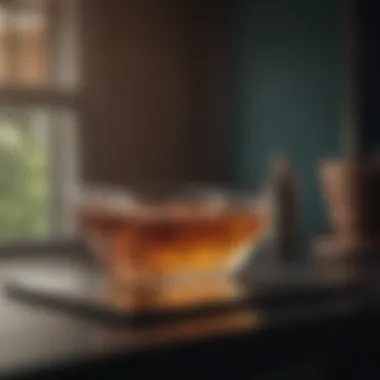
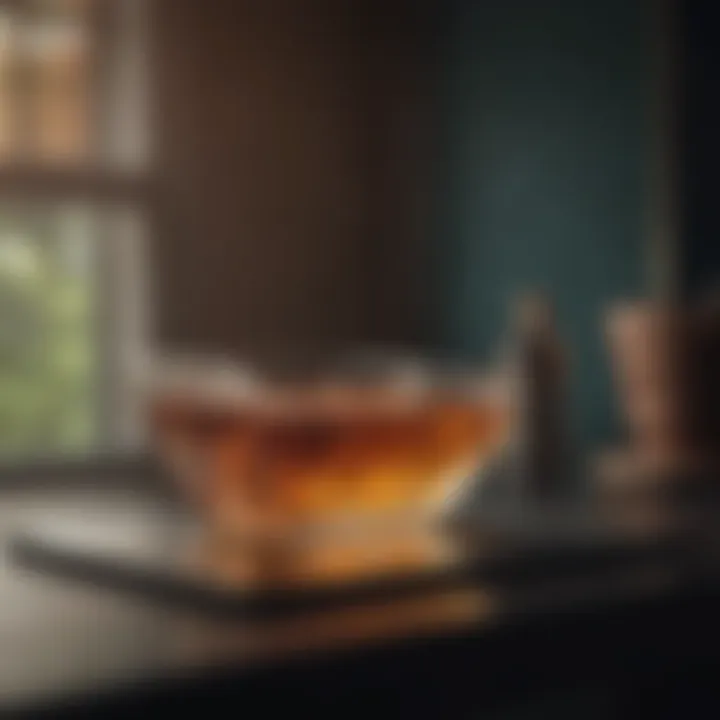
- Benefits of Extrusion:
- Cost-effective for mass production
- Consistent thickness and quality
- Shorter lead times
However, switching materials is harder than with casting; not all designs can be achieved through extrusion due to its limitations in shaping complexity.
Cast Processes
The cast process involves pouring liquid PMMA into molds, allowing it to solidify over time. This technique is highly regarded for producing sheets of exceptional optical quality. The standout feature of cast processes is their ability to create intricate shapes and static forms that might be difficult to achieve with extrusion.
- Advantages of Casting:
- Superior clarity and surface finish
- Flexibility in design for bespoke applications
- Custom thickness options
Nonetheless, the processing time is longer, which may affect production timeliness. Manufacturers must consider these logistics when deciding on the best approach for their specific needs.
Effective knowledge of manufacturing processes, such as extrusion and casting, enables informed choices and enhances the adaptability of Optix Plexiglass across various sectors.
In summary, both the raw materials and the production techniques play a vital role in determining the quality and application of Optix Plexiglass. By understanding these intricacies, homeowners and industry professionals alike can make informed decisions regarding their material choices.
Applications of Optix Plexiglass
Optix Plexiglass finds itself nestled within a myriad of applications, showcasing its versatility and robustness, making it a go-to choice for architects, industry professionals, and product designers alike. Understanding these applications paints a clearer picture of why Optix Plexiglass has become a staple in various sectors. By examining its uses in architectural designs, industrial settings, and consumer products, we gain insights into its benefits, considerations, and overall significance in enhancing everyday life and work environments.
Architectural Uses
When it comes to architecture, Optix Plexiglass is prized for its transparency, allowing natural light to flood interiors while maintaining durability against the elements. Imagine a sun-lit room featuring large windows made from this material, where you can enjoy the outdoor views without worrying about shattering glass.
Architects utilize it for:
- Skylights that brighten interiors
- Partitions that don’t hinder light flow
- Facades that resist weathering while celebrating modern aesthetics
The use of Optix Plexiglass can transform urban buildings into architectural marvels. It stands out not just for its functionality, but also for offering a sleek, contemporary appearance. A notable aspect is its ability to be effortlessly molded into various shapes, enhancing creative freedom in design.
Industrial Applications
The industrial sector exploits Optix Plexiglass for its sheer resilience and weight advantage. Whether in manufacturing plants or laboratories, this material holds its own, standing strong against wear and tear while being significantly lighter than glass. This weight characteristic reduces transportation costs and makes installation a breeze. It often shows up in:
- Protective barriers in workspaces
- Safety shields to guard against flying debris
- Equipment housings that need to maintain visibility while protecting internal components
Additionally, industries benefit from its chemical resistance, which ensures that exposure to various substances doesn't lead to degradation over time. This reliability makes it an ideal choice for environments that require stringent safety measures.
Consumer Products
In the hands of product designers, Optix Plexiglass is nothing short of a game-changer. You’ll find it making appearances in numerous consumer goods, from elegant display cases for collectibles to practical items like household light fixtures.
Key consumer applications include:
- Customized furniture pieces such as tabletops or shelving
- Visual display materials for retail environments
- Home decor items that emphasize artful design
The lightweight nature makes it easy for consumers to manage, while the glass-like appearance adds a touch of class to any room. It’s fascinating how many everyday objects benefit from Optix Plexiglass, all while providing functionality and durability.
"Optix Plexiglass not only meets the practical needs of various sectors, but also enriches aesthetics, making it a preferred material across the board."
Advantages of Optix Plexiglass over Alternatives
Optix Plexiglass is cutting through the clutter, providing some distinct advantages when compared to other materials like glass or polycarbonate. These benefits make it a top choice for many homeowners and crafters alike. Addressing the not only holds significance in understanding its practicality but reshapes how we perceive materials in general.
Comparative Weight
When considering building materials, weight is often a dealbreaker. Optix Plexiglass comes out ahead here. It is considerably lighter than traditional glass, making it much easier to handle, transport, and install. For house owners who want to do DIY projects, this characteristic is invaluable. Not only does it alleviate the physical strain of working with hefty materials, it allows for more flexibility in design. You can hang a large panel without needing robust support structures, hence expanding your options in terms of creativity and functionality.
"Lightweight materials can change the way we build and decorate, making creativity much more achievable."
Cost-Effectiveness
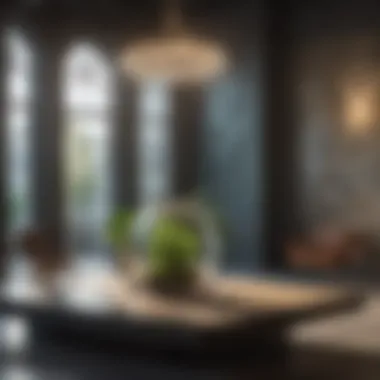
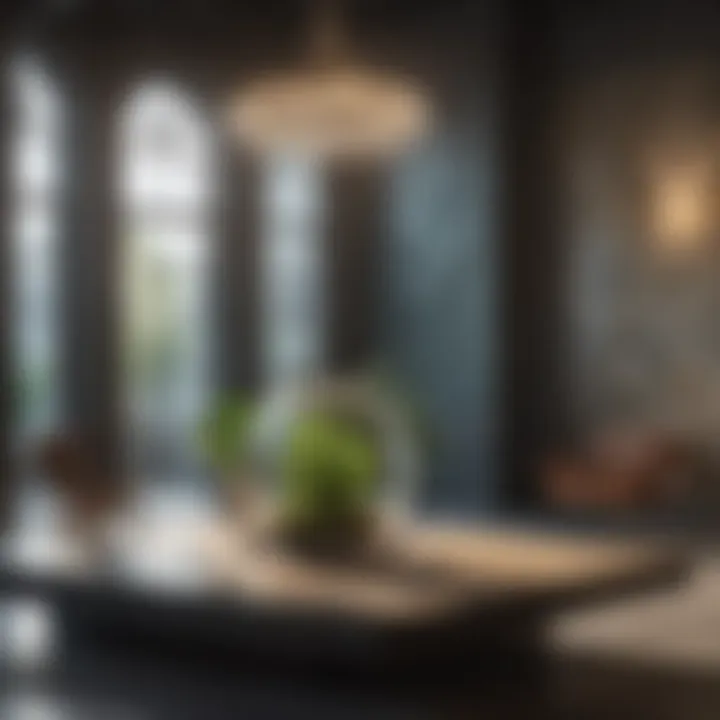
In today’s economy, who isn’t keeping a keen eye on the budget? Optix Plexiglass is not just a pretty face; it's affordable too. In comparison to glass, it often comes with a lower initial cost and has yet another ace up its sleeve—lower maintenance costs. Unlike glass which can break and will require costly replacements, Optix Plexiglass is more resilient to impact and can withstand tougher conditions. Thus, it saves money on replacements and repairs, simple as that. When it comes to consumer goods or home renovations, it's the functional and budget-friendly choice.
Versatility in Crafting
Optix Plexiglass is nothing short of a dandy for crafters. It can be cut, drilled, and shaped with relative ease, which means that it lends itself well to a wide array of projects. From creating custom shelves to unique art installations, the possibilities seem nearly endless. Its compatibility with tools used in woodworking and typical crafting means that you can apply both straightforward and sophisticated techniques. This is especially appealing for housewives and home creators looking to personalize their spaces with individual touches.
Plexiglass can be further embellished with paints, vinyl, or even laser etching to create intricate designs, allowing for a unique craftsmanship that is hard to replicate with other materials. Thus, it doesn’t just serve a functional purpose; it’s also a canvas for artistic expression.
In summation, the advantages of Optix Plexiglass are not just skin deep. Its lighter weight, cost-effectiveness, and crafting versatility make it a smart choice for both homeowners and crafters. These elements combine to create a comprehensive narrative that portrays Optix Plexiglass as a practical, economical, and creative solution in today's material landscape.
Sustainability Considerations
Sustainability stands as a prime concern in today’s world, impacting various sectors from manufacturing to consumption. This section discusses how Optix Plexiglass fits into the discussion of sustainability. It’s about balancing practical utility with environmental responsibility. As the demand for eco-friendly options increases, understanding the sustainability of materials like Optix Plexiglass can’t be overlooked.
Recyclability of Optix Plexiglass
The recyclability of Optix Plexiglass is a key component of its sustainability profile. Unlike some other plastic materials that often end up in landfills, Optix Plexiglass can be recycled multiple times, minimizing waste. When disposed of responsibly, it has the potential to reintegrate into the production cycle. Some manufacturers even provide take-back programs that encourage recycling.
Despite its advantages, the process isn’t perfectly smooth. Consumers must be informed about the specific recycling facilities that accept Optix Plexiglass. Local guidelines will play a massive role in determining if recycling is practical in any given area. Still, the option to recycle this material allows for it to return into circulation, thus promoting sustainability in tangible ways.
"Recycling Optix Plexiglass not only curbs landfill contributions but also fosters a circular economy where materials are continuously repurposed."
Environmental Impact Assessment
Conducting an environmental impact assessment (EIA) for Optix Plexiglass involves looking at several aspects of its life cycle. From raw material extraction to manufacturing processes and eventual disposal, each step in the journey of Optix Plexiglass has some environmental footprint.
Firstly, the production of Optix Plexiglass generally requires fewer resources compared to traditional glass, leading to lower energy consumption and reduced greenhouse gas emissions. That said, the impact of extraction and transport should not be dismissed; these elements can also weigh heavily on the environment.
Moreover, in applications where Optix Plexiglass replaces heavier materials, there is the potential for reduced energy usage in transportation and installation. As industries continue to evaluate their carbon footprints, materials like Optix Plexiglass will be subject to increased scrutiny and innovation aimed at minimizing their environmental impact.
In closing, by assessing its environmental impact thoroughly, stakeholders can make informed choices, ensuring that they adopt materials that not only serve their functional needs but also align with principles of sustainability.
Future Trends in Optix Plexiglass Technology
In an ever-evolving world, staying ahead means adapting to change, especially in materials like Optix Plexiglass. This section explores the latest trends that are shaping its future. Understanding these trends not only highlights the material's ongoing relevance but also opens doors to innovative uses that can benefit homeowners and designers alike.
Innovation in Design
The design of products made from Optix Plexiglass is witnessing a notable shift as designers strive for both aesthetics and functionality. One significant trend is the move towards eco-conscious design. Designers are beginning to favor clear, stylish designs that are also mindful of environmental impact. For example, using Optix Plexiglass not only allows for artistic freedom but also provides a sustainable alternative to traditional glass. It doesn’t just save weight—it can be molded into more intricate shapes that add flair to any home décor.
Moreover, new textures and finishes are coming to the forefront. Instead of the standard clear options, innovations are leading to frosted, colored, or patterned versions of Optix Plexiglass, providing homeowners more choices to reflect their personal style.
In addition, integration with smart technologies is growing. For instance, some designs now incorporate light-sensitive or UV-filtering features. This means that one can have a window that not only looks good but also protects against harmful rays, enhancing both comfort and safety in the home.
Advancements in Manufacturing Methods
On the manufacturing side, the pace of advancement is also impressive. Recent developments are making the production of Optix Plexiglass faster and more efficient. The adoption of cutting-edge technology like 3D printing and advanced extrusion techniques are gaining traction.
- 3D Printing: This method significantly reduces waste and allows for complex designs to be created with ease. For homeowners, this means customized solutions can become a reality. Imagine a uniquely designed container or fixture that exactly fits into your home—thanks to 3D printing, this is now achievable.
- Advanced Extrusion Techniques: Innovations in extrusion are leading to better consistency and quality in thickness across sheets of Optix Plexiglass. This means that builders and designers can rely on optimal performance without unexpected imperfections. Home improvement projects can proceed with greater confidence.
Adapting these manufacturing techniques not only enhances Optix Plexiglass's functionality but also makes it a more viable choice for a broader range of applications. From contemporary furniture to architectural glazing, these advancements can redefine how people incorporate Optix Plexiglass into their lives.
"Innovation is not just about what we can create; it's about how we can make our world better with materials that work for us."
Finale
Wraping up this exploration, the conclusion plays a pivotal role in solidifying the understanding of Optix Plexiglass. It's not just about summarizing the details covered; rather, it’s about distilling the essence of why this material is increasingly seen as a major player in various fields.
In the summary of key points, we can recapture the unique physical and chemical characteristics that make Optix Plexiglass stand out from its counterparts. From its exceptional clarity and lightweight nature to its impressive resistance to harsh environments, these properties ensure it’s plotted in the path towards modernization.
Moreover, considering the growing momentum in sustainable solutions, the environmental impact of Optix Plexiglass brings compelling reasons for its preference in manufacturing and construction. Understanding its recyclability further highlights the increasing demand for eco-friendly materials in today’s world.
Importantly, the applications of Optix Plexiglass cut across diverse sectors, from architecture to industrial design. The multitude of innovations propelling the material forward clearly signifies its versatility, aligning perfectly with current industry needs and trends.
Thus, the conclusion serves not only to encapsulate but also to project the future of Optix Plexiglass as a material of choice. It emphasizes the continuous evolution and how its ongoing advancements—be it in design or manufacturing—shape a promising landscape for firms and individuals alike.
Summary of Key Points
- Definitional Clarity: Optix Plexiglass is recognized for its superior transparency and lightweight properties.
- Durable and Versatile: It resists impacts better than traditional glass, making it useful in high-risk settings.
- Sustainability Focus: Its recyclability and lower environmental footprint serve as compelling factors for its usage.
- Applications Across Industries: From architecture to consumer products, its use cases are broad and growing.
- Future Advancements: Innovations in production methods are promising even better applications down the road.
Final Thoughts on Optix Plexiglass
Looking forward, it appears that the role of Optix Plexiglass will only burgeon, particularly as new technologies and applications come into play. Homeowners and designers alike ought to take note, as this material could very well transform the landscape of interior design, outdoor fixtures, and more. Its ability to adapt and innovate in tandem with users' needs reflects an investment into tomorrow’s design ethos. The future seems bright for those who are willing to embrace the potential Optix Plexiglass has to offer.







